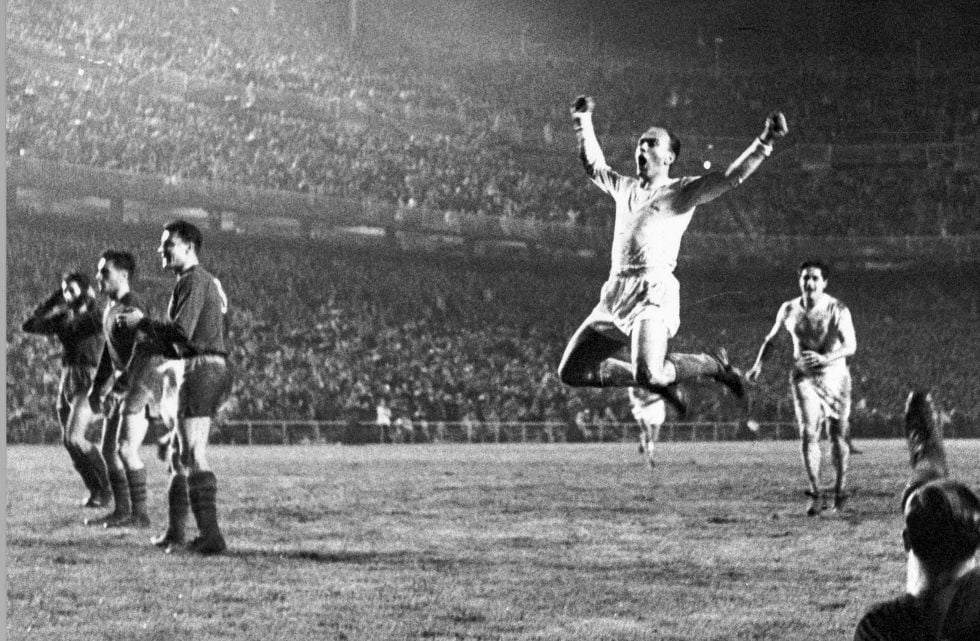When Was Real Madrid Founded? History & Origin Facts
Real Madrid was officially founded as Madrid Football Club on March 6, 1902, in Madrid, Spain. This article breaks down how and when Real Madrid started, why its roots matter, how it grew, and what makes it stand out today.
When Was Real Madrid Founded?
Real Madrid started on March 6, 1902. It began as Madrid Football Club, and didn’t get “Real” in its name until 1920, when King Alfonso XIII gave it royal status. The club was started by a few football fans led by Juan Padrós, Carlos Padrós, and Julián Palacios, who wanted a club open to everyone, no matter their social background.
Why Madrid? Why Football?
Football came to Madrid in the late 1800s thanks to students and academics who picked up the game in England. It wasn’t common then. These folks—many with connections to Cambridge and Oxford—started the city’s first clubs, like Sky Football, in 1897. After disagreements, some members left and formed a new club, Nueva Sociedad de Foot-ball, which eventually became Madrid Football Club.
The First Real Madrid Meeting
On March 6, 1902, the Padrós brothers called other football lovers to a small meeting at Al Capricho, their family’s shop. That day, the group agreed on the club’s name—Madrid Football Club—set the membership fee, and even picked the club’s signature white shirts, inspired by England’s Corinthian team. Just 28 people joined as founding members, or “socios”.
Early Matches and First Wins
Madrid Football Club played its first match just days after the official founding. Local games happened between club members, and soon, they started playing against other teams. By 1905, the club had claimed its first big win—the Copa del Rey, beating Athletic Bilbao. This early success made people in Madrid notice the club quickly.
Becoming Real Madrid
In 1920, King Alfonso XIII thought the club was special and gave it the “Real” (Royal) title. That’s how it got its full name, Real Madrid Club de Fútbol—and the iconic crown emblem. This royal connection made the team stand out, raising its status in Spain.
Growth Through the Years
Real Madrid kept growing in the early years. They became one of the founding members of La Liga, Spain’s top football league, in 1929. The club’s first league title came in 1932, showing it wasn’t just a one-season wonder. Football fans all around Spain started following Real Madrid and their matches.
The Stadium Story
When Real Madrid first started, matches happened in open fields and borrowed land. As the club earned more fans and success, they built and moved to newer stadiums. By 1947, Real Madrid had the Santiago Bernabéu Stadium, which became one of the most famous football stadiums in the world. Santiago Bernabéu Yeste, a club legend, pushed for this change, helping the club keep up with its growing support.
Members Run the Club
One thing to know: Real Madrid isn’t owned by one person or a business. Its members—called socios—have always owned and run the club. They vote on key decisions, and help keep the club focused on football. This setup is different from most major European football clubs.
Moving Past the Early Days
The early days set up the traditions and spirit that Real Madrid still has now. The club picked the color white for its kits, which many fans think stands for simple values and excellence. The club also tried to be open to people from every social class, not just wealthy fans, which helped grow its support everywhere.
Big Trophies and Titles
After the first league came, Real Madrid started winning bigger prizes. The club ruled Spanish football throughout many decades, winning its first Copa del Rey in 1905, and then stacking up league titles and more cup victories. By the end of the 1960s, Real Madrid had built a reputation for being one of the dominant teams in Europe.
European Success
The 1950s and 1960s were especially impressive. Real Madrid, led by legends like Alfredo Di Stéfano and Ferenc Puskás, won the European Cup five times in a row (from 1956 to 1960). These years made the club famous worldwide and helped spread football’s popularity outside Spain.
Staying Strong
Real Madrid didn’t just slow down after its early success. The club kept attracting some of the world’s best players and managers. This includes stars like Cristiano Ronaldo, Zinedine Zidane, and David Beckham, who helped Real Madrid become a global brand. New titles kept coming, including a record number of European Champions League trophies and more domestic cups.
Real Madrid’s Identity
The club is known not just for winning but for style and attacking football. Its culture is shaped by pride in its history, global reach, and a sense of belonging among its millions of fans. The name “Real Madrid” today means excellence, ambition, and high expectations in every season.
Example: How Real Madrid Changed Football
Real Madrid helped create the European Cup, now called the UEFA Champions League, back in the 1950s. The club’s success in Europe set standards other teams wanted to match. Fans from all over the planet started following Real Madrid, not just people from Madrid or Spain.
Quick Timeline of Real Madrid’s Founding and Early Growth
1897: Sky Football, Madrid’s first football club, starts.
1900: Nueva Sociedad de Football splits off from Sky Football.
1901: Club renamed Madrid Football Club.
March 6, 1902: Official founding meeting at Al Capricho.
1905: First Copa del Rey win.
1920: King Alfonso XIII gives “Real” honor, club becomes Real Madrid.
1929: Real Madrid helps found La Liga.
1932: First league title.
Real Madrid’s Lasting Impact
Real Madrid’s roots from 1902 help explain why it became one of the most respected, successful football clubs ever. Every year, hundreds of thousands visit the Santiago Bernabéu Stadium and millions tune in to watch their matches around the world. The drive to win and the tradition of being open to all fans started at that first meeting in a small Madrid shop more than 120 years ago.
In Plain Words
Real Madrid was founded on March 6, 1902, by a group of football fans who wanted to start a club for everyone. Over the years, it won trophies, built a famous stadium, and earned attention across the world. The “Real” part came in 1920 thanks to the king. And through it all, Real Madrid stayed run by its members, aiming for big wins, and building one of the football’s most famous stories.
Real Madrid Facts
Year Event
1897 Sky Football founded in Madrid
1900 Nueva Sociedad de Football created
1901 Renamed Madrid Football Club
1902 Official founding: March 6, first board elected
1905 First Copa del Rey win
1920 Named Real Madrid by royal decree
1929 Founding member of Spanish La Liga
1932 First La Liga title
1947 Santiago Bernabéu Stadium opens
1956-1960 Five consecutive European Cups
2024 Holds record number of Champions League titles
Conclusion
Real Madrid’s journey started small, with a handful of football enthusiasts wanting a club for everyone in Madrid. The official founding was on March 6, 1902, but its story is still being written on the world’s football fields. The club’s dedication to sports and its fans helped it become a symbol—and it all started with one meeting, one idea, and a love for football.

